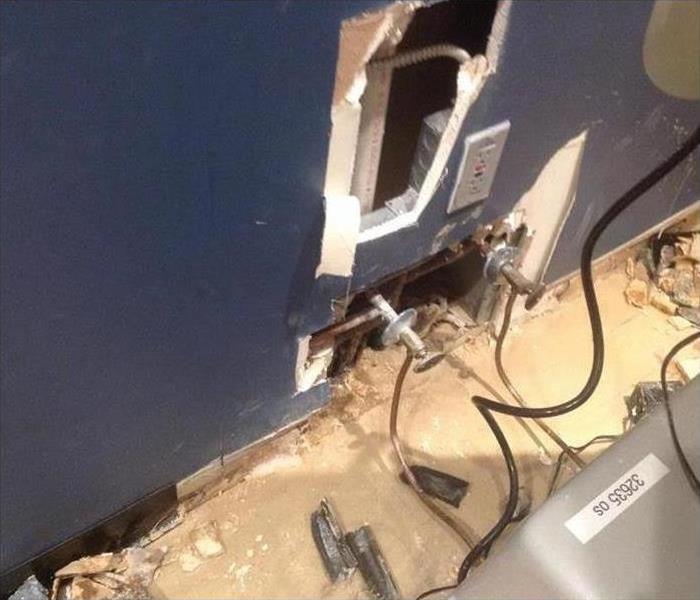How do you fix water damaged walls?
1/5/2023 (Permalink)
Water damage can be a nuisance for any homeowner. One of the most common areas that water damage can occur in is on walls. While it is possible to find solutions online, the best way to fix water damaged walls is by having a professional inspect the source of the leak, repair the leak, and then make the necessary repairs. But how do you fix water damaged walls and how do you identify water damage in the first place? Let’s break it down.
Identifying water damage on your walls
Before you can begin repairing water damaged walls, it’s important to first identify the cause of the problem. If you have a leaking pipe or a broken seal in your windows, these need to be repaired before any wall repairs can occur. If you skip this step, the moisture will continue to seep into your walls and could cause further damage in the future.
This step may require the help of a professional water restoration company. This is because water damage can affect many areas that are not noticeable to the naked eye. Without the right equipment, you may never identify the full scope of the water damage.
Once you've identified the source of the issue and taken care of it, you can move onto the next step - identifying what kind of damage has occurred.
The most common type of water damage is staining, which is caused by mold or mildew growing on damp surfaces. Staining is usually visible as dark spots or streaks on your walls that may appear blotchy or uneven. If staining is too severe, then it might be necessary to replace entire sections of drywall or paint over them with waterproof paint to prevent further problems from occurring down the line.
In addition, wood studs behind drywall may also need to be replaced if they have been warped by moisture exposure. If they are not replaced, it could lead to mold complications, as well as complications with the integrity of your home or business.
How do you fix water damaged walls?
Step One: Identify the Cause of the Damage
As mentioned, the first step in repairing your water-damaged walls is determining what caused the damage in the first place. This is important because it allows you to identify potential solutions for preventing further damage. Common causes of water damaged walls include plumbing issues, roof leaks, and poor air circulation. It is important to address these underlying problems before attempting any repair work on the walls themselves.
Step Two: Dry Out The Affected Area
Once you have identified the source of the damage, it’s time to start drying out the area. This is essential as it prevents mold and other forms of rot from taking hold and exacerbating an already difficult situation. If possible, open windows near the affected wall in order to encourage air circulation and speed up the drying process. If needed, you can also use a dehumidifier or industrial fans to further reduce moisture levels in your home. Water restoration companies have access to this equipment, and it may be necessary to contact them for assistance during this step.
Step Three: Repair The Damaged Wall
Once your wall has dried out completely, it’s time to start repairing any areas that have been damaged by water or mold growth. Depending on how extensive your damage is, this may involve replacing drywall panels entirely or simply patching up smaller holes and cracks. For more serious cases of water-damaged walls, you may need professional help in order to ensure that all necessary repairs are made correctly and safely.
Fixing water damaged walls requires quick action and careful planning if you want to avoid more costly repairs down the line. By identifying what caused your water-damaged walls, drying out the affected area thoroughly, and then making necessary repairs, you can ensure that your home stays safe from any further harm due to water damage.






 24/7 Emergency Service
24/7 Emergency Service
